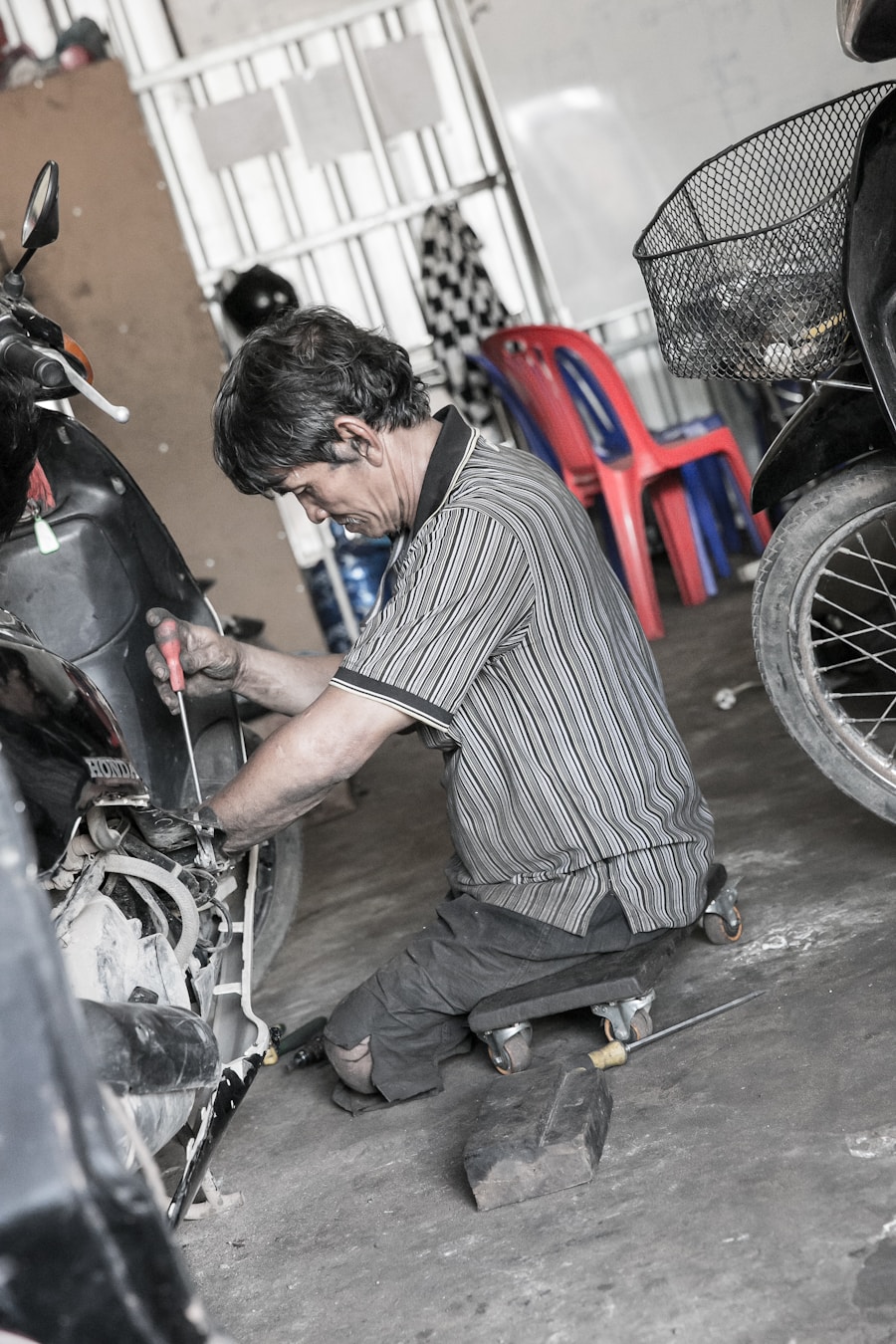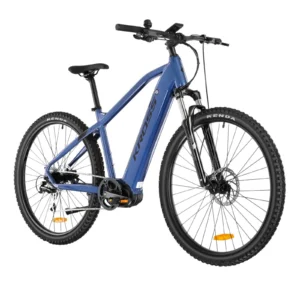Sous-total : 1 250,28 €
Conseils d'entretien essentiels pour les kits de conversion de vélos électriques
Les kits de conversion pour vélos électriques ont gagné en popularité auprès des passionnés de cyclisme comme des cyclistes occasionnels, offrant une solution économique pour transformer un vélo traditionnel en vélo électrique. Ces kits comprennent généralement des composants essentiels tels qu'un moteur, une batterie, un contrôleur et divers accessoires de fixation. Leur principal atout réside dans leur polyvalence : ils s'installent sur une large gamme de vélos, des VTT aux vélos de route, permettant ainsi aux utilisateurs de conserver leur cadre préféré tout en profitant des avantages de l'assistance électrique.
Le moteur est le cœur du kit de conversion et peut être monté à différents emplacements selon le type de kit choisi. Les moteurs moyeux sont généralement installés dans la roue avant ou arrière, fournissant la puissance directement à la roue et simplifiant ainsi l'installation. Les moteurs à entraînement central, quant à eux, sont montés sur le pédalier et offrent une meilleure répartition du poids et un meilleur rendement, notamment sur terrain vallonné.
Le choix entre ces deux types de batteries dépend souvent des besoins du cycliste, comme le terrain à parcourir et l'expérience de conduite souhaitée. De plus, il est crucial de bien comprendre les caractéristiques de la batterie, car elles déterminent l'autonomie et les performances du vélo électrique. Les batteries lithium-ion sont les plus courantes en raison de leur légèreté et de leur forte densité énergétique.
Points clés à retenir
- Les kits de conversion de vélo électrique peuvent transformer un vélo ordinaire en vélo électrique en ajoutant un moteur, une batterie et un contrôleur.
- Une inspection et un entretien réguliers de la batterie sont essentiels pour garantir des performances optimales et la longévité du vélo électrique.
- La lubrification et le nettoyage des pièces mobiles telles que la chaîne, les engrenages et les pédales sont essentiels pour un fonctionnement fluide et efficace du vélo électrique.
- Il est important de vérifier et de régler régulièrement les freins pour des raisons de sécurité et pour garantir leur bon fonctionnement.
- La surveillance et l'entretien du moteur sont nécessaires pour éviter les problèmes et garantir que le vélo électrique continue de fonctionner correctement.
Inspection et entretien réguliers de la batterie
La batterie est sans doute l'un des composants les plus importants d'un kit de conversion pour vélo électrique, car elle influence directement les performances et l'autonomie du vélo. Une inspection régulière de la batterie est essentielle pour garantir sa longévité et sa fiabilité. Les cyclistes doivent vérifier l'absence de tout signe de dommage physique, comme des bosses ou des gonflements, qui peuvent indiquer une cellule de batterie endommagée.
De plus, inspecter les bornes de la batterie pour détecter toute trace de corrosion ou de connexions desserrées peut prévenir les problèmes électriques potentiels pendant le fonctionnement. Un entretien approprié peut prolonger considérablement la durée de vie d'une batterie de vélo électrique. Il est conseillé de maintenir la batterie chargée entre 20% et 80% pour des performances optimales.
Une décharge complète d'une batterie lithium-ion peut entraîner des dommages irréversibles, tandis qu'une charge continue à 100% peut réduire sa durée de vie. Il est également conseillé aux cyclistes de stocker leurs batteries dans un endroit frais et sec lorsqu'elles ne sont pas utilisées, car les températures extrêmes peuvent nuire à leur bon fonctionnement. Vérifier régulièrement la tension et la capacité de la batterie à l'aide d'un multimètre permet d'évaluer son état et d'identifier les problèmes potentiels avant qu'ils ne s'aggravent.
Lubrification et nettoyage des pièces mobiles

L'entretien d'un vélo électrique ne se limite pas à la surveillance de la batterie ; il faut également prêter attention aux pièces mobiles qui contribuent à une conduite fluide. Une lubrification régulière des composants tels que la chaîne, le dérailleur et les points de pivot est essentielle pour réduire les frottements et l'usure. Une chaîne bien lubrifiée améliore non seulement les performances de changement de vitesse, mais prolonge également la durée de vie de la chaîne et des composants de la transmission.
Les cyclistes doivent utiliser des lubrifiants adaptés aux chaînes de vélo, en les appliquant avec parcimonie pour éviter d'accumuler la saleté et la crasse. Le nettoyage est tout aussi important pour préserver les performances d'un vélo électrique. La saleté et les débris peuvent s'accumuler sur différentes pièces du vélo, entraînant une usure accrue et des pannes mécaniques potentielles.
Les cyclistes doivent nettoyer régulièrement leur vélo avec de l'eau et du savon doux, en évitant les produits chimiques agressifs qui pourraient endommager les composants sensibles comme les connexions électriques ou les peintures. Une attention particulière doit être portée aux zones autour du moteur et de la batterie, car ces composants peuvent attirer la poussière et l'humidité, ce qui peut nuire aux performances. Un vélo propre est non seulement plus esthétique, mais aussi plus performant, garantissant le fonctionnement optimal de tous les systèmes.
Vérification et réglage des freins
| Véhicule | Fréquence | Procédure |
|---|---|---|
| Voiture | Tous les 12 000 miles | Inspectez les plaquettes de frein, les rotors et les étriers pour détecter toute trace d'usure ou de dommage. |
| Moto | Tous les 6 000 milles | Vérifiez le niveau et l'état du liquide de frein, réglez le levier et la pédale de frein |
| Camion | Tous les 25 000 milles | Inspectez les conduites et flexibles de frein pour détecter les fuites et les dommages, réglez le frein de stationnement |
Les freins sont un élément essentiel de la sécurité de tout vélo, et les vélos électriques ne font pas exception. Compte tenu de la vitesse et du poids accrus liés à l'assistance électrique, le bon fonctionnement des freins est primordial pour la sécurité du cycliste. Il est essentiel de vérifier régulièrement l'usure des plaquettes de frein ; des plaquettes usées peuvent réduire considérablement la puissance de freinage et augmenter les distances d'arrêt.
Les cyclistes doivent remplacer les plaquettes de frein lorsqu'elles deviennent fines ou présentent des signes d'usure irrégulière. Le réglage des freins est un autre aspect essentiel de l'entretien à ne pas négliger. Les freins à disque mécaniques nécessitent des réglages périodiques pour garantir un alignement correct entre le disque et les plaquettes, tandis que les freins hydrauliques peuvent nécessiter une purge pour maintenir des performances optimales.
Les cyclistes doivent se familiariser avec les procédures de réglage spécifiques à leur système de freinage, qui peuvent varier selon les fabricants. Des freins correctement réglés améliorent non seulement la sécurité, mais aussi l'expérience de conduite en offrant une puissance de freinage constante.
Surveillance et entretien du moteur
Le moteur est un élément clé d'un kit de conversion pour vélo électrique, fournissant la puissance nécessaire pour assister le pédalage. Une surveillance régulière des performances du moteur est essentielle pour identifier rapidement tout problème potentiel. Les cyclistes doivent être attentifs aux bruits ou vibrations inhabituels qui pourraient indiquer des problèmes mécaniques au niveau du moteur.
De plus, vérifier l'absence de surchauffe lors d'une utilisation prolongée peut contribuer à prévenir les dommages ; si le moteur devient excessivement chaud, une pause peut être nécessaire pour le refroidir. L'entretien du moteur consiste généralement à s'assurer que toutes les connexions électriques sont sécurisées et exemptes de corrosion. Des connexions desserrées ou corrodées peuvent entraîner des coupures de courant intermittentes, voire une panne complète du système moteur.
Les cyclistes doivent également inspecter le carter du moteur pour détecter tout signe de dommage ou d'usure susceptible de compromettre son intégrité. Garder le moteur propre et exempt de saletés et de débris contribuera à préserver son efficacité ; cependant, il faut veiller à ne pas exposer les composants électriques à l'eau ou aux produits de nettoyage, qui pourraient les endommager.
Dépannage des problèmes courants et réparations

Malgré un entretien régulier, les vélos électriques peuvent rencontrer des problèmes nécessitant un dépannage et des réparations. Un problème fréquent est le manque de puissance du moteur, qui peut provenir de diverses sources, comme une batterie déchargée ou des connexions défectueuses. Il est conseillé de vérifier d'abord le niveau de charge de la batterie ; si celui-ci est faible, la recharger peut résoudre le problème.
Si la batterie est correctement chargée mais que la perte de puissance persiste, il est essentiel de vérifier l'état de toutes les connexions électriques pour déceler tout desserrage ou corrosion. Un autre problème fréquent concerne les performances de freinage : si les freins sont mous ou insensibles, cela peut indiquer de la présence d'air dans les conduites hydrauliques ou des plaquettes usées. Dans ce cas, une purge des freins hydrauliques ou le remplacement des plaquettes peut s'avérer nécessaire pour rétablir le bon fonctionnement.
De plus, les cyclistes doivent être attentifs aux codes d'erreur affichés sur le contrôleur ou l'écran de leur vélo, qui peuvent fournir des informations de diagnostic précieuses concernant les dysfonctionnements du système. Comprendre ces codes peut aider à identifier les problèmes spécifiques nécessitant une intervention. En conclusion, l'entretien d'un kit de conversion pour vélo électrique nécessite une approche globale qui englobe divers composants, des batteries aux freins.
En comprenant ces éléments et en mettant en œuvre des routines d’inspection et d’entretien régulières, les cyclistes peuvent s’assurer que leurs vélos électriques restent sûrs, efficaces et agréables à conduire pendant des années.
FAQ
Que sont les kits de conversion de vélo électrique ?
Les kits de conversion pour vélo électrique sont des kits qui peuvent être ajoutés à un vélo classique pour le transformer en vélo électrique. Ces kits comprennent généralement un moteur, une batterie, un contrôleur et d'autres composants nécessaires à l'alimentation du vélo.
Comment fonctionnent les kits de conversion de vélo électrique ?
Les kits de conversion pour vélos électriques fonctionnent en ajoutant un moteur et une batterie à un vélo classique. Le moteur est généralement fixé à la roue avant ou arrière, et la batterie l'alimente pour fournir une assistance au pédalage.
Quels sont les conseils d’entretien pour les kits de conversion de vélos électriques ?
– Vérifiez et serrez régulièrement tous les boulons et connexions pour vous assurer qu’ils sont bien fixés.
– Gardez la batterie chargée et stockée dans un endroit frais et sec lorsqu’elle n’est pas utilisée.
– Nettoyez régulièrement le moteur et les autres composants pour éliminer la saleté et les débris.
– Vérifiez l’usure des freins et des plaquettes de frein et remplacez-les si nécessaire.
– Inspectez les pneus pour vous assurer qu’ils sont correctement gonflés et qu’ils ne présentent aucun signe d’usure, et remplacez-les si nécessaire.
À quelle fréquence faut-il entretenir les kits de conversion de vélo électrique ?
Les kits de conversion pour vélos électriques doivent être entretenus régulièrement, avec une vérification et un nettoyage approfondis au moins une fois par mois. De plus, il est important d'effectuer une inspection rapide avant chaque sortie pour s'assurer que tout fonctionne correctement.
Existe-t-il des outils spécifiques nécessaires à l’entretien des kits de conversion de vélos électriques ?
Parmi les outils de base nécessaires à l'entretien des kits de conversion pour vélos électriques, on peut citer des clés, des tournevis, des démonte-pneus et une pompe à vélo. De plus, des outils spécifiques pour le réglage et l'entretien des composants du moteur et de la batterie peuvent être nécessaires, selon le kit.

 Vélo électrique à moteur central 250 W 12 Ah 29 x 2,25 pouces, 25 km/h, vélo électrique pour adulte, vélo de montagne puissant pour hommes
Vélo électrique à moteur central 250 W 12 Ah 29 x 2,25 pouces, 25 km/h, vélo électrique pour adulte, vélo de montagne puissant pour hommes 